Can You Cut Bamboo With A Chainsaw?
- January 29, 2024
- 0 comment
When you think of bamboo, the image of lush, green groves might come to mind, not the roar of a chainsaw. But when it comes to managing or harvesting bamboo, sometimes you need some serious power. Enter the chainsaw, a tool commonly associated with cutting thick wood like oak. But can it handle the unique nature of bamboo? Let’s delve into this intriguing question.
Understanding Bamboo and Chainsaws
Bamboo isn’t your typical plant. Although it’s technically a grass, it can soar up to 100 feet and reach diameters of 36 inches, rivaling the strength and durability of oak. Given a chainsaw’s capability to slice through sturdy oak, it’s plausible to assume it can tackle bamboo. However, bamboo presents its own set of challenges due to its fibrous nature and tendency to splinter.
Can You Cut Bamboo with a Chainsaw?: Yes, but Approach with Care
It’s true, you can use a chainsaw to cut through large bamboo culms (stems). However, caution is paramount. Bamboo’s tendency to splinter means you must adopt a more nuanced approach compared to cutting regular wood.
Preparation and Safety: The Essential Steps
1. Gear Up for Safety

Safety can’t be overstated. Equip yourself with safety glasses, gloves, ear protection, and consider additional protection like a long-sleeved shirt, chaps, and boots to minimize the risk of injury.
2. Chainsaw Check
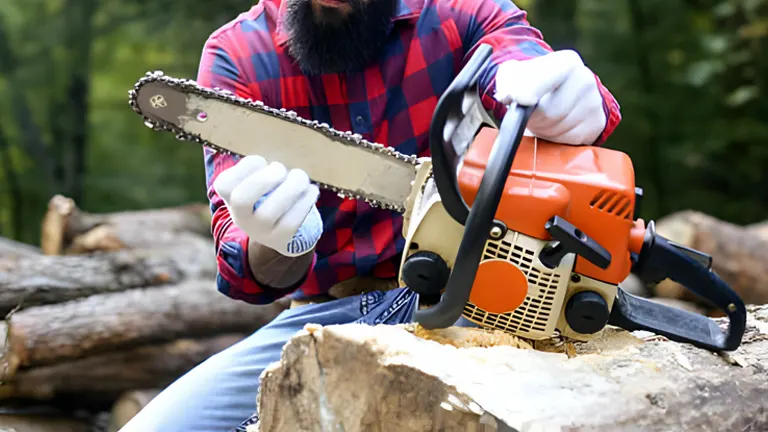
A well-maintained chainsaw is a safe chainsaw. Ensure your chainsaw’s chain is correctly tensioned, the fuel and oil are topped up, and the chain is razor-sharp to tackle the bamboo efficiently.
3. Bamboo Prep
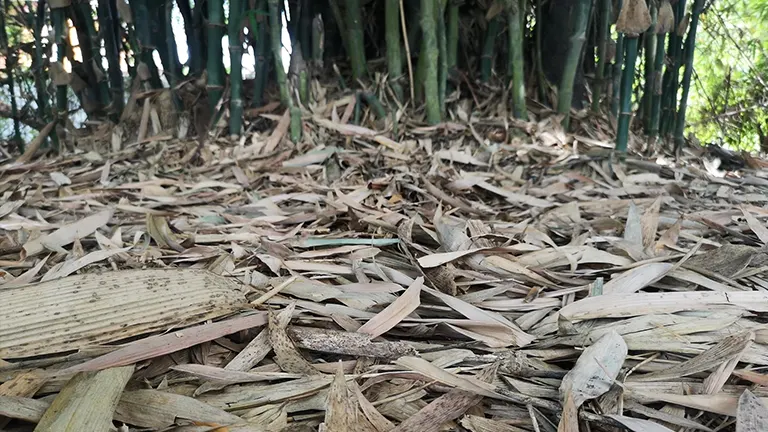
Clear the clutter. Remove any leaves, branches, or obstacles around the bamboo. Refrain from using masking tape, as it can become entangled in the chainsaw, creating a hazardous situation.
Cutting Technique: Precision and Care
1. The Right Tools for the Job
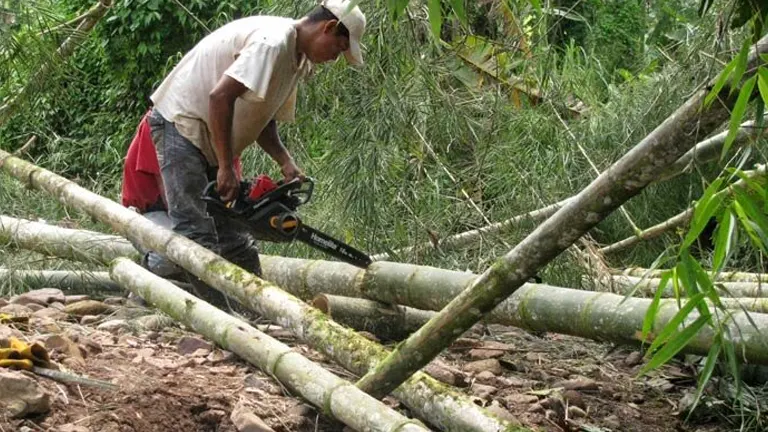
Choose a chainsaw that suits the task. A chainsaw with a 30-50cc engine and a 14-20 inch bar is typically sufficient. For a quieter, more environmentally friendly option, consider an electric chainsaw with at least 10-12 amps of power.
2. Initial Cut

Your first cut sets the tone. Begin with a precise 30-45 degree angle cut using the tip of the chainsaw. Apply steady pressure and guide the chainsaw through the bamboo, aiming to cut between the nodes – the natural weak points in the bamboo’s structure.
3. Let it Fall
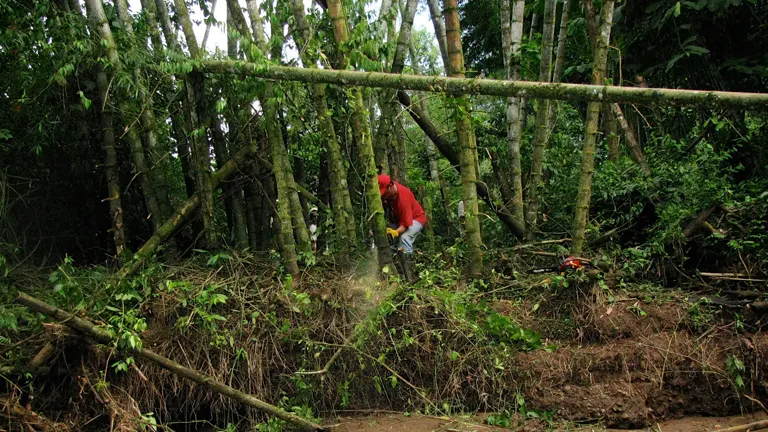
After the cut, allow the bamboo to fall naturally. If the bamboo doesn’t fall on its own, use a pole or rope to gently nudge it in the desired direction. Remember, never attempt to catch it or push it forcefully, as this can lead to accidents.
4. Clean-Up
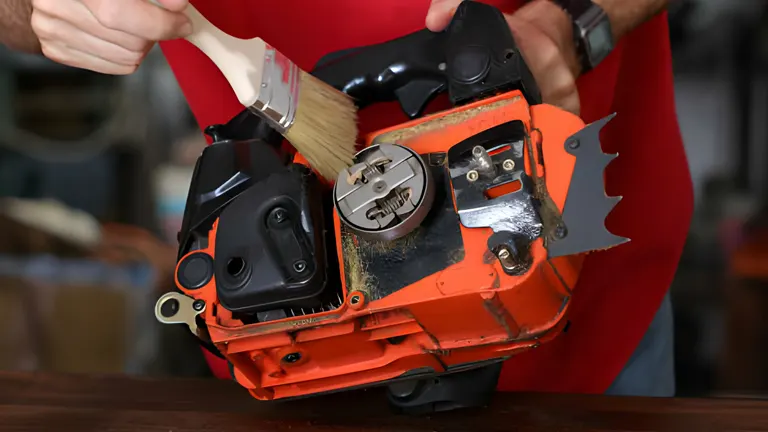
A good craftsman always cleans up. Once you’re done, switch off the chainsaw, let it cool down, and then clean any debris from the saw and the chain. Proper post-use maintenance ensures your chainsaw is ready and safe for the next job.
If you still don’t believe and you need to see a live-action bamboo cutting, Check it out Below!
“Cutting bamboo with a chainsaw is a task that requires respect for the material and the tool. With the right preparation, equipment, and technique, you can tackle this challenge effectively and safely.“
Navigating Through Bamboo Cutting Tools: A Guide for Every Size
When it comes to cutting bamboo, one size does not fit all. The diameter of your bamboo stalks should guide your choice of tool, ensuring efficiency and safety. Let’s explore the ideal tools for bamboo of various thicknesses.
Hand Pruners for 1″ or Less
These are the precision artists of bamboo cutting. Hand pruners are perfect for smaller stalks, offering a clean, easy cut without much effort. They’re the ideal choice for a quick trim or tidy up.
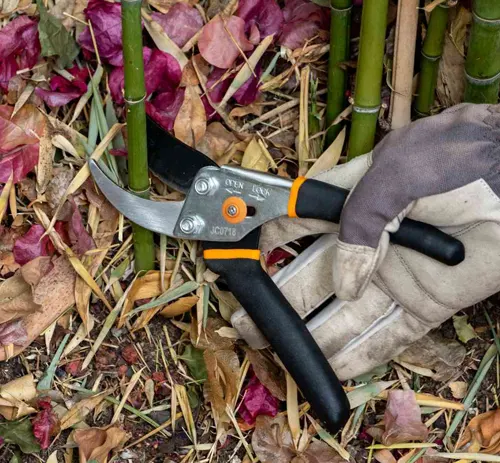
Handsaws for 1″ – 3″
Stepping up the game, handsaws are your best bet for medium-sized stalks. Whether it’s a hacksaw, crosscut saw, or bow saw, these tools offer versatility and precision without the need for fuel or electricity.
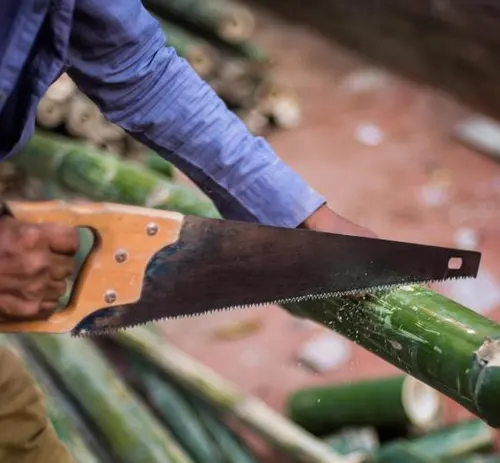
Machetes for up to 4″
When bamboo gets tougher, the machete steps in. Its long, sharp blade is designed to handle thicker stalks, slicing through with ease. Not only is it effective, but it also adds a bit of adventure to the task.

Chainsaws for 5″ or More
For the thickest of stalks, a chainsaw is your powerhouse tool. It can make quick work of bamboo 5 inches in diameter or more. However, its power comes with a need for vigilance to prevent blade pinching or chain issues.
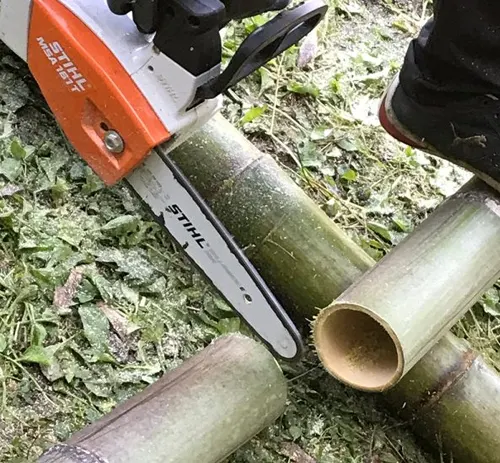
Considering the Alternatives: When Less is More
While the raw power of a chainsaw is undeniable, it’s not always the most practical choice for every bamboo cutting task. Here’s why you might consider alternative tools:
- Tools like axes, handsaws, or loppers are not just about being low-tech; they are highly effective in their own right, especially for bamboo of smaller diameters.
- These tools require less brute force and offer more precision, making them ideal for more intricate cutting tasks or when you need to be mindful of the surrounding area.
- Simpler tools reduce the risks associated with power tools, such as kickback from a chainsaw. This makes them a safer choice, especially for casual or inexperienced users.
Choosing the right tool for cutting bamboo is about matching the tool’s capabilities with the specific needs of your task. Whether you reach for a hand pruner for a small job or power up the chainsaw for a big challenge, understanding the strengths and limitations of each option will lead to the best results and a safer experience. Happy cutting!
Final Thoughts
Yes, you can use a chainsaw on bamboo, but it’s not always a straightforward task. Bamboo’s unique characteristics require a thoughtful approach to avoid unnecessary splintering or damage. Whether you opt for a chainsaw or a simpler tool, the key is to understand the nature of bamboo and approach it with the respect and caution it demands. Happy cutting!
FAQs
- Can a chainsaw’s vibration cause bamboo to splinter more?
Yes, the vibration from a chainsaw can contribute to bamboo splintering, especially if the bamboo is dry. It’s crucial to use sharp blades and the correct technique to minimize this effect. - How does bamboo’s growth pattern affect chainsaw cutting?
Bamboo grows in segments called nodes, which are tougher than the rest. Cutting at the right angle and location, preferably between nodes, is essential for a smooth cut and to prevent the chainsaw from getting stuck. - Is there a difference between cutting green and dry bamboo with a chainsaw?
Absolutely. Green (fresh) bamboo is more flexible and tends to bind around the chainsaw blade, while dry bamboo is harder and more prone to splintering. Adjust your cutting technique accordingly. - Can the chainsaw oil or lubricant affect bamboo?
Generally, no. However, if you plan to use the cut bamboo for gardening or as a plant stake, it’s best to clean it to prevent any potential chemical interaction with the plants. - Why is it advised to avoid using masking tape when cutting bamboo with a chainsaw?
Masking tape can cause the chainsaw to become tangled. It’s intended to prevent splintering but can create a sticky mess and potentially jam the chainsaw blade. - How often should I sharpen my chainsaw when cutting bamboo regularly?
Bamboo can dull the chainsaw blade faster than wood due to its fibrous nature. It’s recommended to sharpen the blade after every few hours of cutting, depending on the bamboo’s thickness and density. - What’s the safest way to dispose of bamboo offcuts after using a chainsaw?
Bamboo offcuts can be repurposed as garden stakes or mulch. Otherwise, ensure they are disposed of responsibly, as bamboo can regrow from cut pieces if left on the ground. - Can cutting bamboo with a chainsaw attract pests?
Fresh bamboo cuts can attract insects or pests if left unattended. It’s best to clean the area and remove offcuts promptly after cutting. - Is there a risk of the chainsaw bouncing back when cutting bamboo?
Kickback can occur if the chainsaw hits a node or if the bamboo binds the blade. Always cut with the blade’s lower part and maintain a firm grip with both hands. - How does the diameter of the bamboo affect the choice of chainsaw?
For bamboo with a diameter larger than 5 inches, a more powerful chainsaw with a larger bar is recommended. For smaller diameters, a lightweight chainsaw or even a manual saw might be more efficient and easier to handle.
We’d love to hear from you! Dive into the discussion below by sharing your own bamboo-cutting stories, savvy tips, or personal reviews of your chainsaw adventures. Your unique insights not only enrich our collective knowledge but also empower fellow enthusiasts to make well-informed decisions. Whether you’re a seasoned pro or just starting out, your contributions are invaluable in shaping a supportive community for all bamboo-cutting aficionados. Let’s unite in our passion for precision, safety, and the sheer joy of turning overgrown groves into beautifully managed landscapes. Share your story, and let’s grow together!

David Murray
Forestry AuthorI'm David Murry, a forestry equipment specialist with a focus on chainsaw operation. With over 13 years of experience, I've honed my skills in operating and maintaining a wide range of machinery, from chainsaws to log splitters. My passion for the outdoors and commitment to sustainable forestry drive my work, which emphasizes safety, efficiency, and staying updated with industry advancements. Additionally, I'm dedicated to sharing my expertise and promoting environmental awareness within the forestry community.


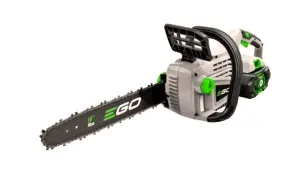
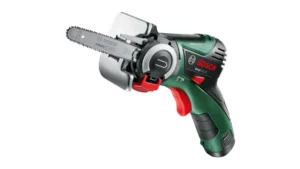
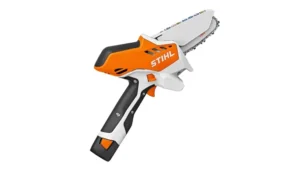

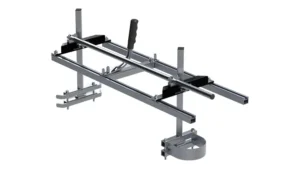
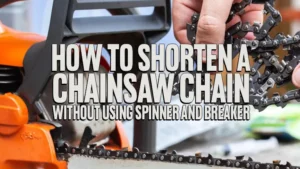
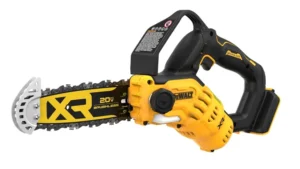

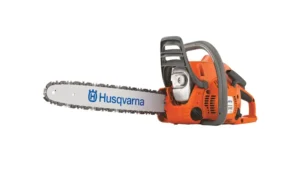
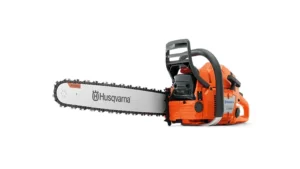
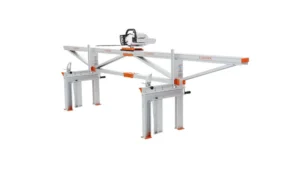
Leave your comment